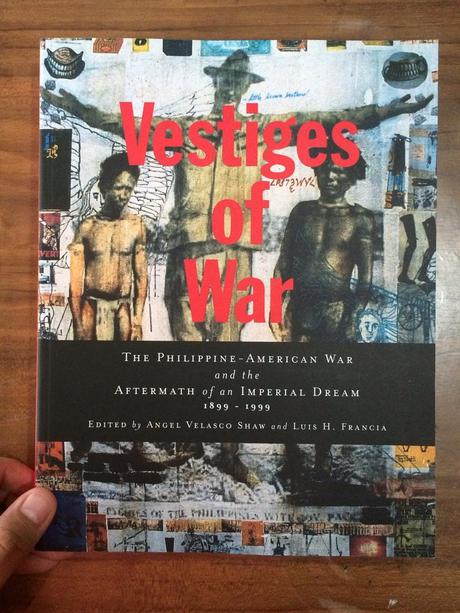
I bought the Vestiges of War for 20% off at the recently concluded Manila International Book Fair. Clocking in at 500 pages, it includes visual and critical essays, photographs, plays, poetry, and artwork addressing Philippine-U.S. relations. Very substantial work and worth checking out.
Anyway, the rest of the world is probably unaware that the Philippines was once a colony of the United States of America. During the tail end of the Philippine Revolution of 1898, Spain essentially sold the Philippines (along with other Spanish controlled territories) to the United States via the Treaty of Paris (1898). The Spanish, unwillingly to surrender to Filipino forces, entered into a face-saving mock battle with the Americans (see: 1898 Battle of Manila). From being a colony of Spain, we became a colony of the United States.
In the early 1900s, war between the Philippines and the US broke out. American textbooks labelled the conflict as the “Philippine insurrection”. Obviously, the Philippines didn’t win that conflict and so we were America’s “little brown brothers” for the next couple of decades until self-rule was given after World War II.
Now, the Philippines still lives under the shadow of American influence. It seems that we “love” all things American. Our form of government, our educational system, what side of the road we drive in, and our fanaticism with basketball all came from the US of A.
I recently had a conversation with a friend about what it means to be a Filipino artist and we had no easy answers. This country has been taken over by foreign powers three times in its history (four if you count the brief spell the British spent in the 1700s). Sometimes I think we seem to drown in our influences. Our native tongues choke on borrowed words and ideas. How can we make these influences truly ours? Like I said, no easy answers.
But what is clear is that we must dig deeper into our collective memories. As artists, we have a responsibility to figure out where our art-making lies within the greater context of our culture and history. It doesn’t matter if we make art for social awareness or commercial gain. I think we have to make an effort to understand where our practice lies in the context of those that came before us.
